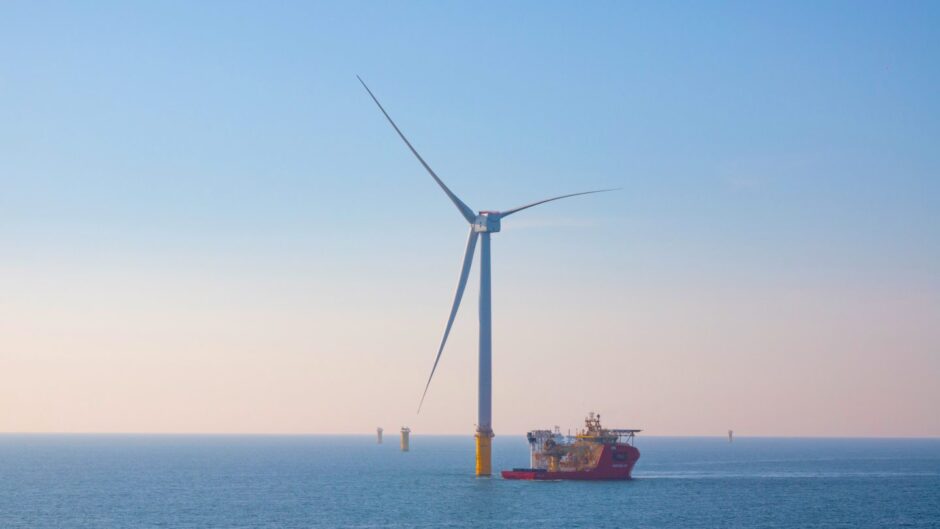
SSE has warned that supply chain issues and a shortage of vessels means the first phase of its Dogger Bank offshore wind development may not be fully completed until next year.
In a trading update on Thursday the UK generator warned that turbine installation at the first 1.2GW phase of the Dogger site had been affected by “challenging weather conditions”, worsened by vessel availability and supply chain delays.
“Following notification of further vessel unavailability over the coming weeks there is an increasing possibility that full operations will not be achieved until 2025, although this is not expected to materially change project returns,” SSE said.
It suggests the project has made sluggish progress since first power was achieved in October last year – several months after the expectations of a summer switch-on.
However, SSE noted that installation work across the HVDC transmission system, cabling and foundations had moved forward.
The 3.6 GW Dogger Bank Wind Farm is being built off the East Coast of England, 70 nautical miles off the coast of Yorkshire, in three 1.2 GW phases: Dogger Bank A, B and C. The hub is a joint venture between SSE Renewables (40%), Equinor (40%) and Vårgrønn (20%).
“The business is working closely with its supply chain partners to improve current turbine installation rates, with a further update on progress to be provided in May with publication of FY24 results,” the statement added.
Dogger Bank A secured support for 1.2GW of capacity under the Contract for Difference (CfD) mechanism, with a strike price of £39.65/MWh (in 2012 prices, CPI-indexed) for delivery in 2023/24.
Stormy forecast
Performance across the wider group was also affected by weather during the quarter ending 31 December 2023, with SSE (LON:SSE) also reporting “lower-than-planned renewables output” over the period.
In response, it reaffirmed full-year adjusted earnings per share guidance of “more than 150p” but noted a “narrower range of probable financial outcomes” for the year.
Renewables output over the past nine months was around 15% below plan, or 10% below plan relative to full year, it said, having been impacted by a combination of mixed weather conditions, short-term plant outages and the rephasing of flexible hydro output into the fourth quarter.
It noted that January has seen “continued mixed weather conditions” for the renewables fleet.
In SSE Thermal, performance was also affected by lower spark spreads and market volatility compared with last year, though it is still expected to deliver on guidance of more than £750m adjusted operating profit, including more than £75m from gas storage, for FY24.
However the group hailed “continued improvement in the long-term policy and regulatory environment” thanks to updates on the sixth CfD allocation round and progress on routes to market for emerging sectors such as hydrogen and carbon capture and storage.
Chief financial officer Barry O’Regan said: “Whilst the quarter has seen the business navigate some short-term challenges, we reiterate and continue to focus on the delivery of our 2027 financial and operational growth targets,” under the company’s Net Zero Action Plan investment strategy.
“The strength of our balanced business mix and the growth opportunity it provides is aligned with a policy environment which increasingly recognises the essential role renewables, electricity networks and flexible power will play in the energy system of the future. Our long-term strategy remains unchanged and will deliver sustainable value for shareholders and society.”
Analysts hail ‘strong position’
John Moore, senior investment manager at RBC Brewin Dolphin said it was “not all plain sailing” for SSE and the wider sector even as the policy environment improves, but was confident in the group’s long-term prospects.
“SSE’s shares are down -10% in the year to date, but it has strong prospects and a good amount of momentum, putting the company in a strong position – even if inclement weather conditions cause a blip in performance in the short term.”
Recommended for you
